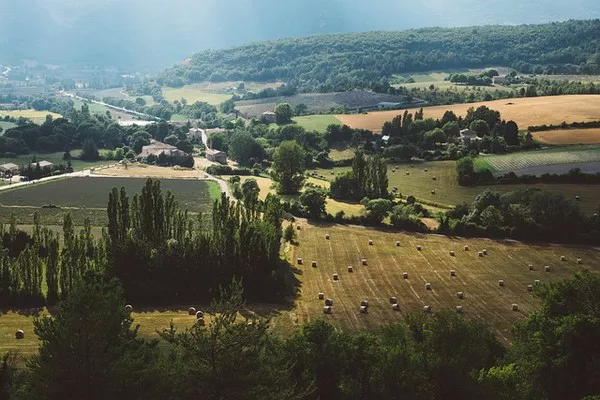In December 2018, President Andrés Manuel López Obrador of Mexico pledged that not a single tree would be sacrificed for the construction of the Maya Train, a flagship project aimed at revitalizing the Yucatán Peninsula. However, as of June 2023, satellite imagery reveals a starkly contrasting reality: approximately 6,659 hectares (16,455 acres) of forest have been cleared to make way for the contentious project.
An analysis of satellite data conducted by CartoCrítica paints a disturbing picture. By June 2023, an astonishing 10,831 hectares (26,764 acres) of land were involved in some aspect of the Maya Train project, with a staggering 61% of this area succumbing to deforestation.
The consequences are undeniable: an area once teeming with forests now stands bereft, replaced by the infrastructure of the Maya Train, including railway tracks, stations, bus stops, electrification zones, machinery yards, access roads, and material storage areas.
This deforested region is nearly ten times the size of Mexico City’s Chapultepec Forest and almost twenty times the expanse of New York City’s Central Park.
CartoCrítica’s analysis also underscores a troubling fact: approximately 87% of the deforested area, equivalent to 5,769 hectares (14,255 acres), was cleared in violation of environmental laws. Construction activities proceeded without obtaining the mandatory Change of Use of Forest Land (CUSTF) approval from Mexico’s Secretariat of Environment and Natural Resources (SEMARNAT).
Shortly after CartoCrítica’s revelation, a coalition of environmental organizations, including the Mexican Center for Environmental Law (CEMDA), the Mexican Civil Council for Sustainable Forestry (CCMSS), and the Heinrich Böll Foundation, unveiled the Maya Train mapping tool at a press conference. In response, SEMARNAT issued a statement highlighting “inconsistencies” in the data presented by these organizations.
Maya Train’s Impact on the Maya Forest
To assess the extent of the Maya Train’s impact on the Yucatán Peninsula’s forest cover, CartoCrítica compared satellite images from November 2018 with those from May and June 2023. They also relied on pre-project land cover data provided by the Mexican Commission for the Knowledge and Use of Biodiversity. The investigation considered the existing land cover before the train project commenced, excluding land speculation and hotel infrastructure.
The analysis revealed that the deforestation affected various forest types: 4,139 hectares (10,228 acres) of lowland and medium rainforest, 2,246 hectares (5,550 acres) of medium deciduous forest, 70 hectares (173 acres) of mangrove and péten, and 11.4 hectares (28 acres) of medium and high evergreen forest.
Sections 4 and 6 of the Maya Train project, stretching from Izamal to Cancún and Tulum to Chetumal, respectively, have experienced the most extensive deforestation, with 1,640 hectares (4,053 acres) and 1,308 hectares (3,232 acres) of forest cover lost.
Sergio Madrid, a CCMSS member, emphasized that the National Forest Inventory indicates that 1 hectare (2.5 acres) in the Yucatán Peninsula can host an average of 900 trees. If this estimation holds, the construction of the Maya Train has led to the removal of around 6 million trees.
Mexico’s National Fund for Tourism Development (FONATUR), responsible for the project, disclosed that 3.4 million trees were felled or removed across multiple sections due to the Maya Train’s construction, with sections 4 and 5 experiencing the most significant deforestation. The Sélvame del Tren group has estimated that at least 10 million trees have been lost.
Flouting Environmental Laws and Land Use Approvals
The General Law of Sustainable Forest Development in Mexico mandates that requests for the approval of a Change of Use of Forest Land (CUSTF) must be submitted to SEMARNAT before any land clearing or logging activities. SEMARNAT can grant CUSTF approvals only in exceptional cases, provided that such changes do not jeopardize biodiversity, cause soil erosion, degrade water quality, or harm ecosystem carbon storage capacity.
A scrutiny of the 18 Maya Train CUSTF approvals granted by SEMARNAT reveals that 16 of them were authorized in 2023, well after construction had already commenced and land had been cleared. Viridiana Maldonado, a lawyer from CEMDA, pointed out that this practice contradicts forestry policy, which prohibits land clearing before securing proper approval. According to the General Law of Sustainable Forestry Development, land with unauthorized clearing or logging cannot undergo land use changes for the next 20 years. SEMARNAT should have rejected such requests, but it didn’t.
CartoCrítica’s analysis demonstrates that a substantial portion of the deforested area, approximately 87%, totaling 5,769 hectares (14,255 acres), lacks CUSTF approvals.
The organizations argue that FONATUR’s approvals are inadequate, insufficient, and untimely. Moreover, critical documents related to the Maya Train have not been publicly disclosed due to the federal government’s classification of the project as a matter of national security.
SEMARNAT Responds
In response to the unveiling of the mapping tool, SEMARNAT issued a statement disputing the findings. They contended that the study erroneously claimed 6,659 hectares were subject to CUSTF, while only 3,167.29 hectares had received definitive or provisional approval.
SEMARNAT argued that the mapping tool incorporated areas designated for material storage by private entities, unrelated to the Maya Train project. They stressed that the study failed to consider these distinctions.
However, the environmental organizations responded by reiterating the validity of their claims, emphasizing that satellite evidence firmly supported their calculations.
While the legal battle over deforestation, environmental approvals, and land use changes continues, the impact of the Maya Train on the Yucatán Peninsula’s precious ecosystem remains an urgent concern. Deforestation poses a severe threat to biodiversity, water quality, cave systems, wetlands, and the livelihoods of indigenous communities. The consequences of this contentious project resonate far beyond the realms of law and governance, raising questions about environmental stewardship and the protection of invaluable natural resources.


